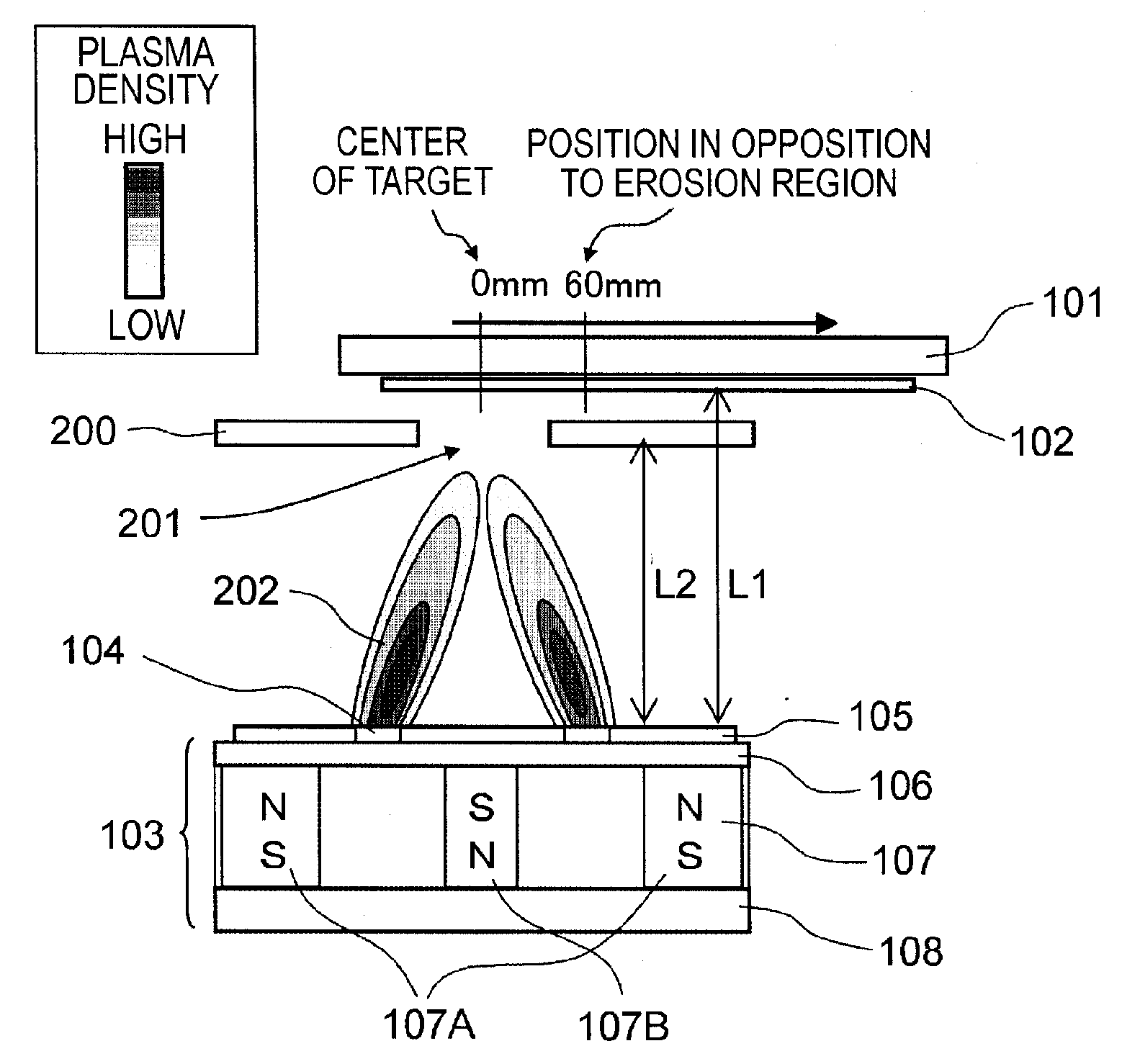Manufacturing method of a boride film, and manufacturing method of an electron-emitting device
- Summary
- Abstract
- Description
- Claims
- Application Information
AI Technical Summary
Benefits of technology
Problems solved by technology
Method used
Image
Examples
examples
[0052]Hereinafter, more specific examples will be described.
first example
[0053]A lanthanum hexaboride target 105 of a circular shape having a diameter of 8 inches and a Si-wafer substrate 102 were used, and the substrate 102 and the target 105 were arranged in opposition to each other, as shown in FIG. 1. An erosion region 104 was formed at a position spaced by a distance of 60 mm from the center of the target. A shield plate 200 is arranged vertically above the target 105, and a mask of an entire erosion opposed region of the substrate 102 was masked. In addition, the shield plate 200 has an opening portion 201 arranged above the central portion of the target 105. A distance L1 between the substrate 102 and the target 105 was set to 90 mm, and a distance L2 between the shield plate 200 and the target 105 was set to 70 mm. The degree of vacuum at the time of exhausting under high vacuum was set to 2×10−4 Pa.
[0054]By using a convergence type magnet having a magnetic field of 1,000 G as a magnet 107, a plasma density distribution 202 was formed in such a m...
second example
[0057]A manufacturing method of an electron-emitting device according to a second example will be described with reference to FIG. 4A-FIG. 4F. FIG. 4A-FIG. 4F are diagrammatic illustrations sequentially showing the manufacturing steps of the electron-emitting device.
[0058]A substrate 401 is a substrate for supporting an element in a mechanical manner. In this example, a PD 200, which is a low sodium glass developed for plasma displays, was used as the substrate 401.
[0059]First, as shown in FIG. 4A, insulating layers 403, 404 and a conductive layer 405 were laminated on the substrate 401. The insulating layers 403, 404 are insulating films, respectively, which are made of materials which are excellent in processability. In the second example, the insulating layer 403 of silicon nitride (SixNy) having of a film thickness 500 nm and the insulating layer 404 of silicon oxide (SiO2) having a film thickness of 30 nm were formed by means of a sputtering method. In addition, the conductive ...
PUM
| Property | Measurement | Unit |
|---|---|---|
| Density | aaaaa | aaaaa |
| Magnetic flux density | aaaaa | aaaaa |
| Erosion-corrosion rate | aaaaa | aaaaa |
Abstract
Description
Claims
Application Information
 Login to View More
Login to View More - R&D
- Intellectual Property
- Life Sciences
- Materials
- Tech Scout
- Unparalleled Data Quality
- Higher Quality Content
- 60% Fewer Hallucinations
Browse by: Latest US Patents, China's latest patents, Technical Efficacy Thesaurus, Application Domain, Technology Topic, Popular Technical Reports.
© 2025 PatSnap. All rights reserved.Legal|Privacy policy|Modern Slavery Act Transparency Statement|Sitemap|About US| Contact US: help@patsnap.com



